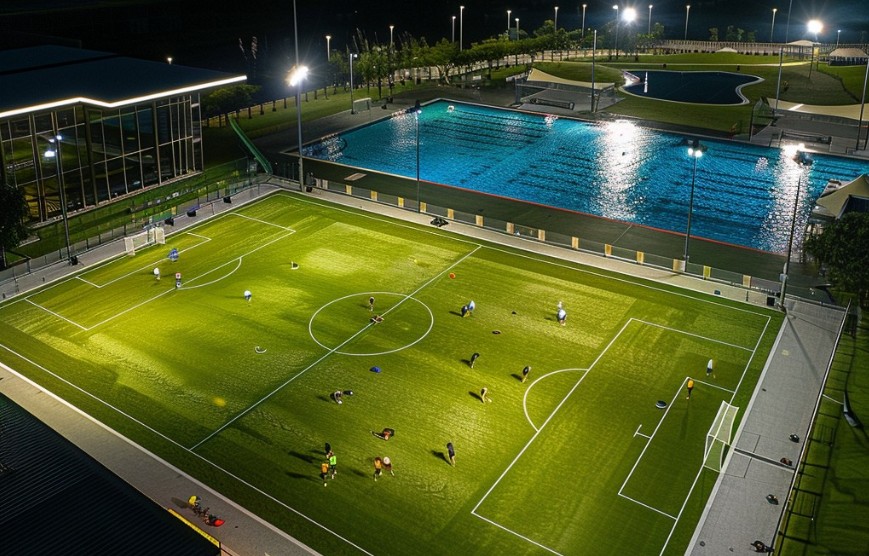Urban spaces are more than just roads, buildings, and green patches – they’re places where people come together, grow, and connect. In recent years, sports complex design has become one of the most exciting ways to revitalise and enrich our urban communities. Whether built for indoor competitions, outdoor recreation, or a combination of both, these facilities are now seen as more than just venues; they’re purpose-built spaces shaping how communities live, play, and thrive.
Let’s look at how these thoughtfully designed sports complexes bring people together and reshape how our communities use urban environments.
Bringing Purpose to Every Corner
A well-planned sports complex might offer indoor courts for basketball, volleyball, or futsal while also catering to outdoor sports like tennis, hockey, or athletics. Some centres include swimming pools, fitness areas, walking paths, and open green spaces for informal activities. This mix of structured and casual options makes the space inclusive, welcoming people of all ages and skill levels, from weekend warriors to school kids and senior walking groups.
A Catalyst for Urban Vitality
Beyond sport, these complexes often breathe new life into underused or neglected urban areas. They create foot traffic, encourage public transport upgrades, and support surrounding businesses like cafés, shops, and community services. With the right design, a sports complex can help transform a previously quiet corner of town into a vibrant social and economic hub. These projects not only deliver physical activity opportunities but also foster a sense of belonging and pride within the community.
The Power of Multisport Courts
One of the most innovative trends in community architecture is the rise of multisport courts. These flexible spaces can quickly shift from basketball to netball, or from indoor soccer to pickleball, depending on community needs. This adaptability means local councils and schools get more value from their investment, with fewer idle periods and more chances for a broader range of sports to be played throughout the year. It also opens the door to shared usage, community programs, and all-ages events.
Design That Balances Form and Function
Great sports complexes don’t need to just look good; they must be functional and work well for everyone who uses them. From clear signage and accessible entry points to thoughtful layouts that guide people smoothly between indoor and outdoor areas, function is just as important as form. Features like shaded seating, change rooms, bike storage, and food kiosks all add to the comfort and usability of the space, helping it become a welcoming, well-used hub that serves the community for years to come.

A Commitment to Sustainability
With growing awareness of climate change and responsible development, sustainability is central to community architecture. Sports complexes increasingly feature solar panels, rainwater harvesting systems, recycled materials, and energy-efficient lighting. Green roofing, natural ventilation, and smart irrigation are also becoming standard. These features not only reduce the long-term running costs of these complexes but also demonstrate an investment in the future of the environment and the community it supports.
Designing Spaces That Bring People Together
A modern sports complex is a gathering point and a symbol of local identity. Through clever architecture and thoughtful design, these spaces support physical health, emotional well-being, social inclusion, and environmental responsibility. When built with purpose, they bring lasting value to the communities they serve.


